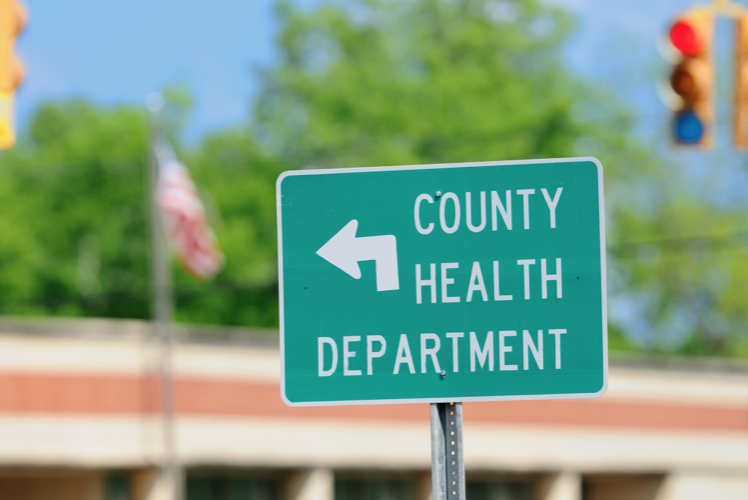CommentsHEALTH CRISIS - For health workers on the front lines of California’s COVID fight, one of the more baffling moments of the pandemic occurred in relative obscurity last May, with the state suddenly awash in tens of billions of dollars in extra revenue.
Gov. Gavin Newsom saw an opportunity to put that unexpected surplus to work. His office dramatically revised his proposed budget for the upcoming fiscal year, asking for $1 billion to expand Medi-Cal, $7 billion to convert hotel rooms to permanent housing for the homeless and money to beef up mental health services, food and shelter for some of the state’s most vulnerable people.
But when it came to the state’s 61 local public health departments, the governor had nothing. For the third straight year, Newsom failed to propose any increase in funding, only $3 million to continue studying the issue and see how much the agencies might need.
Their collective, statewide request in a moment of crisis? It was $200 million — out of nearly $76 billion in surplus funds.
“I was absolutely shocked at the governor’s response to our relatively small budget ask,” Santa Cruz County Health Officer Dr. Gail Newel said at the time. “To have that number come back to zero … has been very disheartening to us.”
* * *
When the story of COVID in California is fully written, the government’s failure to arm its local health agencies — the ones with boots on the ground in local communities and counties — is going to stand as a colossal mistake. Strafed by years of declining funding and understaffed almost across the board, departments near major cities but also in places like Butte, Del Norte and Merced counties were quickly overwhelmed by the scope of the crisis. They never recovered.
Those who’ve suffered the most from this failure were some of the same groups already at elevated risk for harm from COVID: people in low income neighborhoods; Black and Latino residents of the state; essential workers and farm workers; those who depend upon county health programs for their access to care.
Newsom’s administration has mounted all manner of top-down attempts to throw a blanket over the health crisis. It’s an approach that ignored the reality of California: The state is much too vast, and especially too geographically, ethnically and politically diverse, for a one-size-fits-all response to COVID.
County agencies work at the most local of levels. Much like nonprofits and federally qualified health centers, their employees often know their patients by name. They are a destination for those in the greatest need. And California has let them fray.
That’s not all on Newsom; the chronic lack of investment in county health goes back decades. Public health agencies in California receive much of their funding from the federal government, with the rest coming from the state. But in 1991, amid one of a series of recurring budget crises, the Legislature realigned its funding method to place much more of that financial burden on the counties themselves.
County budgets could scarcely support the shift, even with some dedicated funding at the time, and in the 30 years since, local health departments have slashed staff and allowed basic infrastructure, including computer systems, to fall badly behind. In 2018, the nonpartisan Legislative Analyst’s Office concluded that the 1991 realignment no longer meets its own stated principles, noting in particular that counties simply can’t answer the fiscal demands. But the broken system remains in place.
The COVID crisis laid all that bare. Not only were county health departments unable to adequately serve their stressed populations, but testing facilities in some areas were hard to find, with 11 public health laboratories in the state having closed since 1999. Citing costs, some counties long ago eliminated programs aimed at preventing certain chronic diseases, like heart disease and diabetes, which health officials say could have helped many COVID patients fight off the virus’s worst effects.
Most significantly, county health departments — when adequately staffed and operated — have reach. They know their constituencies. They know where the trouble spots are, and which neighborhoods or communities are going to need extra attention, education or outreach. It’s literally the point of having local health agencies.
* * *
While no governor was going to A-plus a crisis the likes of which the modern U.S. had never seen, Newsom’s response over the course of two years has been both instructive and dispiriting. The governor has often deferred to powerful political allies, relaxing nurse/patient ratios at the request of the hospital lobby and fighting an effort to mandate vaccines for the state’s prison guards, who helped fund his anti-recall campaign. He handed another longtime supporter, Blue Shield, a contract to handle the statewide rollout of vaccines and decide where doses would be allocated.
That met with stiff pushback from county health directors. State officials “are relying upon an insurance company to make recommendations about distribution that are related to populations we normally take care of,” Santa Clara County Executive Jeff Smith told the Bay Area News Group. “We know where the populations are, we know where the players are, we know who the vaccinators are — and they’re going to ask a private corporation to give them advice? It’s absurd.”
In short order, almost every county took back the power to distribute its own vaccine supply. Two years into the pandemic, it looks like the smallest of gestures, as local health departments are still asking California’s government to help them get back to full speed.
This year Newsom has another budget surplus on his hands – potentially $31 billion or more. It is a fresh opportunity to help reverse decades of underfunding county public health systems. A year ago, the governor’s silence last year was telling. He can speak volumes now
(Mark Kreidler is a California-based writer and broadcaster, and the author of three books, including Four Days to Glory.)















